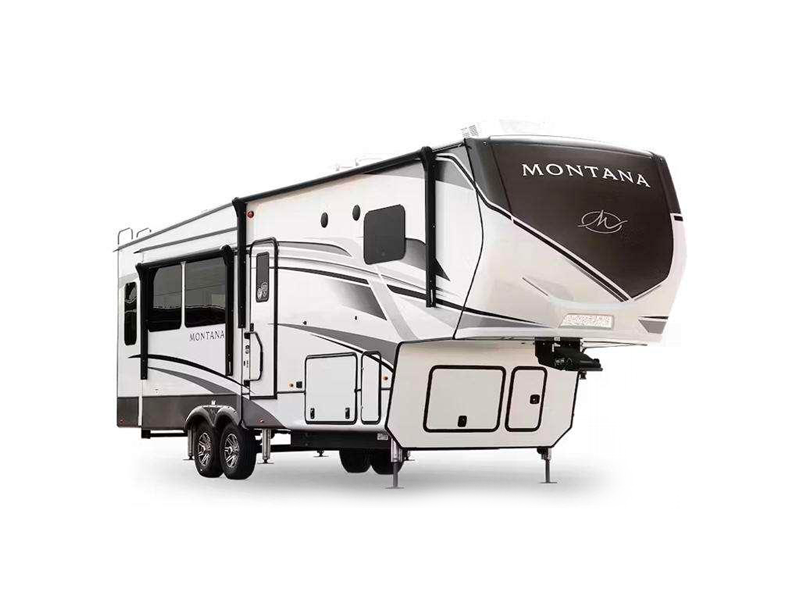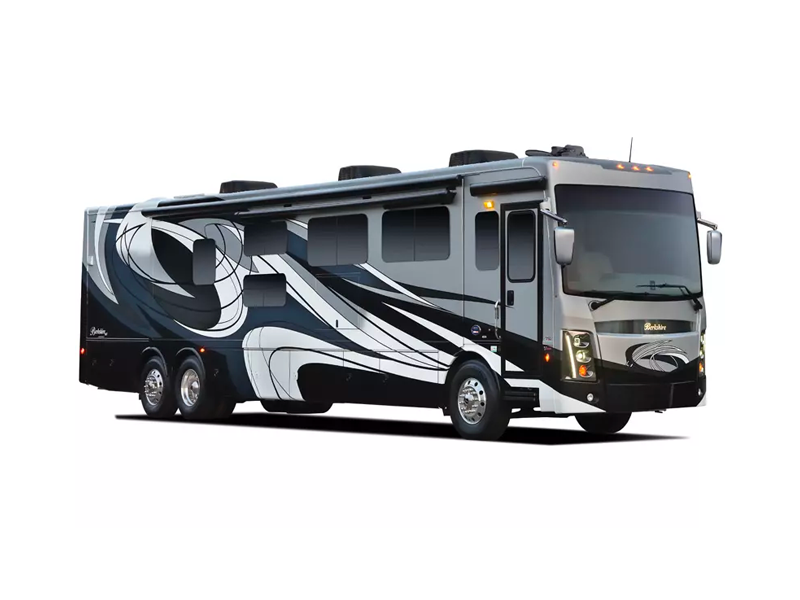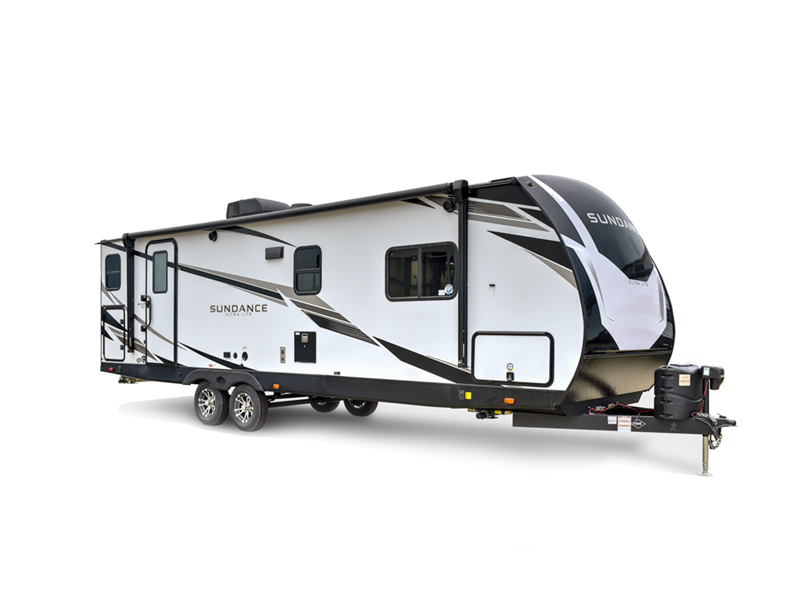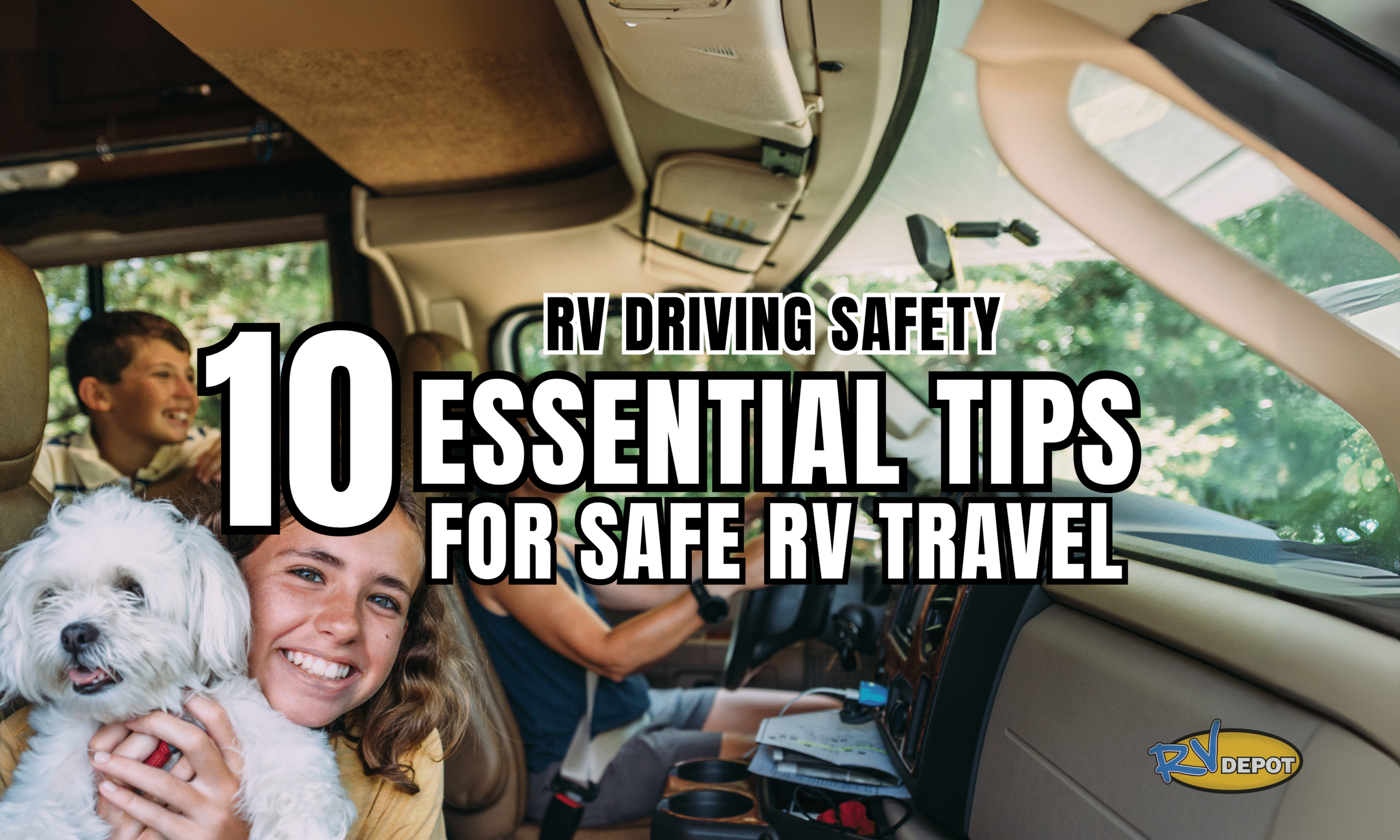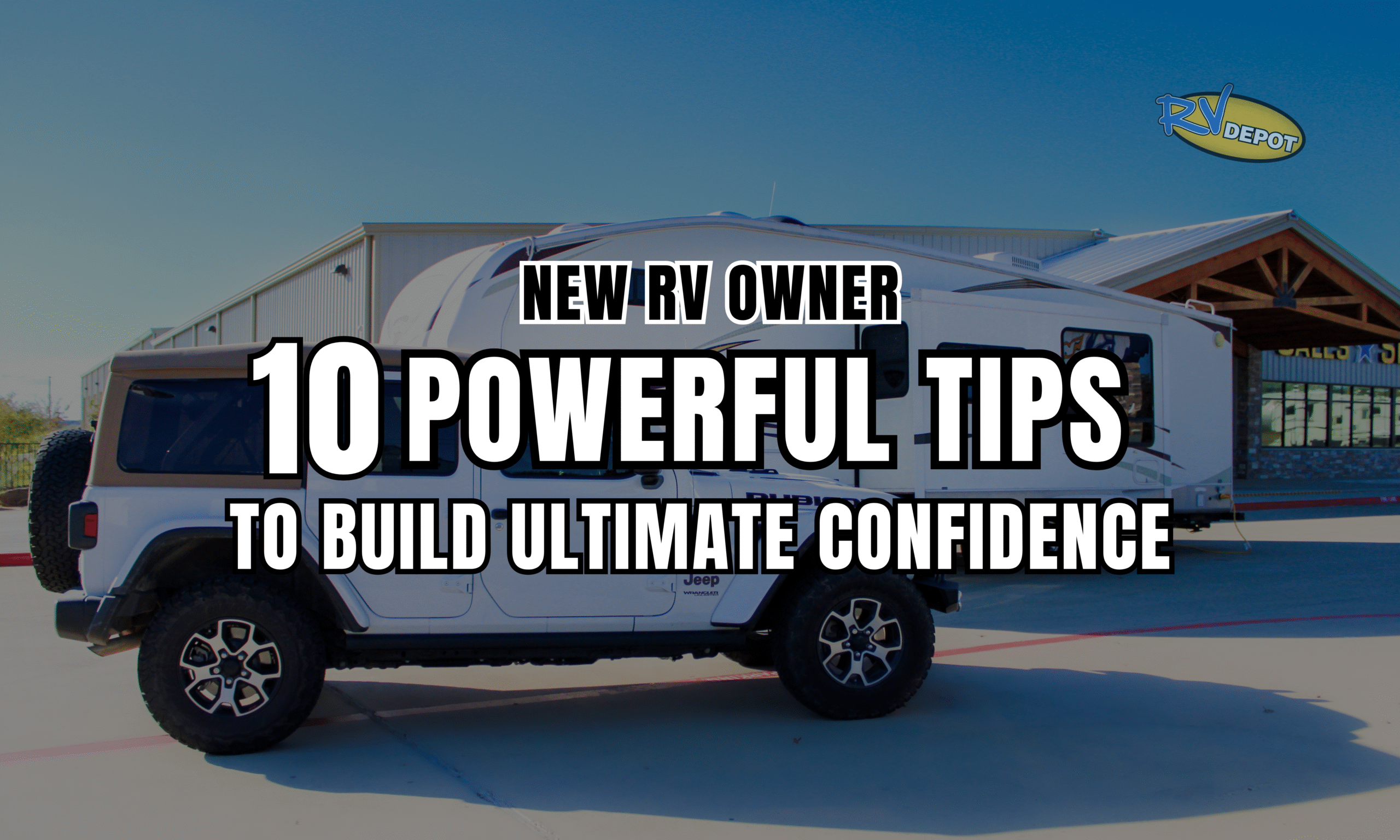Here’s what many new RV owners don’t realize: Driving an RV requires a completely different skill set than driving a car. The physics are different, the visibility is different, and the margin for error is much smaller. A minor mistake that might result in a fender-bender in a car can become a major accident—or worse—in a 30-foot motorhome traveling down the interstate.
The statistics are sobering. According to the National Highway Traffic Safety Administration, RV accidents have increased by 15% over the past five years as more Americans embrace the RV lifestyle. The majority of these accidents are preventable and often result from drivers who haven’t fully adapted their driving techniques to accommodate their larger, heavier vehicles.
But here’s the encouraging news: RV driving safety is completely learnable. With the right knowledge, proper preparation, and consistent practice, you can become a confident, skilled RV driver who handles any road condition with ease. The key is understanding that RV driving safety isn’t just about following traffic laws—it’s about mastering a specialized set of skills that account for your vehicle’s unique characteristics and limitations.
At RV Depot in Cleburne, Texas, we’ve been helping RV owners develop safe driving habits for years. Through our service department, customer interactions, and follow-up calls, we’ve identified the most common RV driving safety challenges and the most effective solutions. We’ve seen which techniques work best for different types of RVs, which mistakes cause the most problems, and which preparation strategies help drivers avoid dangerous situations entirely.
The difference between a stressful, white-knuckle RV trip and a relaxing, enjoyable adventure often comes down to preparation and technique. When you understand RV driving safety principles and practice them consistently, you’ll find that driving your RV becomes second nature. You’ll be able to focus on enjoying the journey rather than worrying about the next turn, bridge, or weather challenge.
In this comprehensive guide, we’ll cover everything you need to know about RV driving safety:
- Essential pre-trip preparations that prevent problems before they start
- Specific driving techniques for handling RV size, weight, and visibility challenges
- Advanced strategies for navigating difficult conditions like wind, rain, and mountains
- Emergency procedures for unexpected situations on the road
- Common mistakes that even experienced drivers make and how to avoid them
- Technology and equipment that enhance RV driving safety
- Real-world scenarios and how to handle them safely
Whether you’re a first-time RV owner or an experienced driver looking to refresh your skills, this guide will give you the confidence and knowledge to handle any situation the road throws your way.
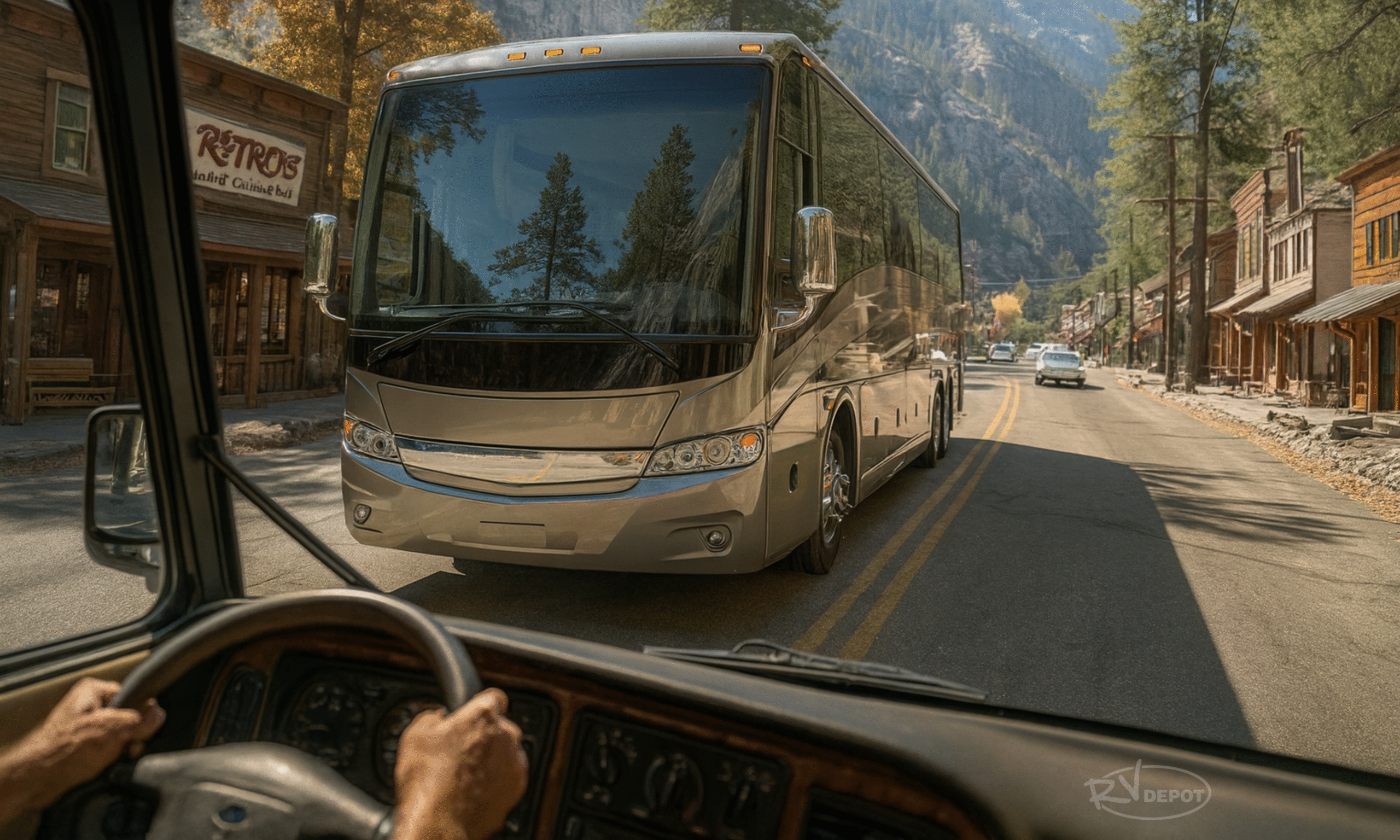
Essential RV Driving Safety Fundamentals
1. Master Your RV’s Specifications and Limitations
The Foundation of RV Driving Safety: You can’t drive safely what you don’t understand. Every RV has unique characteristics that directly impact how it handles, stops, and maneuvers.
Critical Measurements to Know:
- Overall length (including any towed vehicles)
- Width (typically 8-8.5 feet, but varies by model)
- Height (including roof accessories like air conditioners and antennas)
- Gross Vehicle Weight Rating (GVWR) and actual loaded weight
- Turning radius (significantly larger than passenger vehicles)
- Ground clearance (affects approach and departure angles)
RV Driving Safety Tip: Create a laminated card with your RV’s vital statistics and keep it in your glove compartment. This quick reference prevents guesswork when approaching bridges, tunnels, or tight turns.
Weight Distribution and Balance
Understanding Weight Impact on RV Driving Safety: Your RV’s weight distribution affects everything from braking distance to handling characteristics. Improper loading can create dangerous driving conditions.
Safe Loading Practices:
- Distribute weight evenly from front to back and side to side
- Keep heavy items low to maintain a low center of gravity
- Secure all loose items to prevent shifting during travel
- Check tire pressure regularly as weight affects tire performance
- Weigh your loaded RV to ensure you’re within safe limits
Warning Signs of Poor Weight Distribution:
- Excessive swaying or rocking while driving
- Difficulty maintaining straight-line tracking
- Uneven tire wear patterns
- Sluggish steering response
- Bouncing or porpoising motion
2. Develop Advanced Backing and Maneuvering Skills
Why Backing is Critical for RV Driving Safety: More RV accidents happen in campgrounds and parking lots than on highways. Poor backing technique can result in expensive damage and dangerous situations.
Progressive Backing Training Method:
| Training Stage | Location | Focus Area | Time Investment |
|---|---|---|---|
| Stage 1 | Empty parking lot | Basic straight backing | 2-3 hours |
| Stage 2 | Parking lot with cones | Curved backing, sight lines | 3-4 hours |
| Stage 3 | Quiet campground | Real-world scenarios | 4-6 hours |
| Stage 4 | Busy campground | Stress management, precision | Ongoing |
Essential Backing Techniques:
- Use a spotter whenever possible, establish clear hand signals
- Go slow – rushing leads to mistakes and accidents
- Use your mirrors effectively – adjust them properly before starting
- Make small corrections rather than large steering inputs
- Practice the “GOAL” method – Get Out And Look frequently
- Know when to pull forward and reset your approach
Technology That Enhances Backing Safety:
- Backup cameras with wide-angle views
- Wireless backup camera systems for better visibility
- Backup sensors that alert you to obstacles
- Leveling systems that help with campsite positioning
3. Master Highway Driving Techniques
Understanding Highway RV Driving Safety: Highway driving presents unique challenges due to speed, traffic density, and varying road conditions.
Essential Highway Techniques:
Speed Management:
- Drive 5-10 mph below posted limits to account for increased stopping distance
- Reduce speed in curves – RVs have higher centers of gravity
- Slow down in construction zones where lanes are narrower
- Use engine braking on downhill grades to preserve brake pads
Following Distance:
- Maintain 4-6 seconds following distance (vs. 3 seconds for cars)
- Increase following distance in poor weather conditions
- Use the “chunk of change” rule – count seconds between vehicles
- Avoid tailgating – other drivers need to see around you
Lane Changes and Merging:
- Signal early and check blind spots thoroughly
- Use gradual movements – avoid sudden lane changes
- Check mirrors continuously during lane changes
- Merge at traffic speed when possible
- Avoid the far left lane on multi-lane highways when practical
4. Navigate Challenging Weather Conditions
Weather-Related RV Driving Safety Challenges: Weather conditions that are manageable in a car can become dangerous in an RV.
High Wind Driving Strategies:
Wind Speed Guidelines:
- 15-25 mph winds: Increased attention required, reduce speed slightly
- 25-35 mph winds: Significant caution needed, consider alternate routes
- 35+ mph winds: Dangerous conditions, consider stopping until winds subside
High Wind Driving Techniques:
- Reduce speed to increase stability and reaction time
- Maintain firm grip on steering wheel with both hands
- Avoid sudden movements that can trigger loss of control
- Watch for wind direction changes around mountains and large structures
- Pull over safely if conditions become unmanageable
Rainy Weather Precautions:
- Reduce speed significantly on wet roads
- Increase following distance to 6-8 seconds
- Test brakes gently to ensure they’re working properly
- Use headlights even during light rain for visibility
- Avoid hydroplaning by driving in tire tracks when possible
Mountain Driving Safety:
Ascending Grades:
- Maintain steady throttle to avoid overheating
- Use lower gears to reduce transmission strain
- Monitor engine temperature closely
- Pull over if overheating occurs
Descending Grades:
- Use engine braking as primary speed control
- Avoid riding the brakes to prevent overheating
- Maintain lower speeds than traffic flow if necessary
- Have an escape route planned in case of brake failure
5. Plan Routes for Maximum Safety
Route Planning and RV Driving Safety: Proper route planning prevents many emergency situations and reduces stress.
Essential Route Planning Tools:
- RV-specific GPS units that account for size and weight restrictions
- RV trip planning apps with campground and fuel stop information
- State DOT websites for construction and road condition updates
- Bridge and tunnel databases for clearance information
Route Selection Criteria:
- Avoid low clearance areas – plan for your exact height plus 6-inch safety margin
- Check weight restrictions on bridges and mountain passes
- Plan fuel stops – RV fuel economy is lower than cars
- Identify safe stopping points for breaks and overnight stays
- Consider alternate routes in case of road closures or emergencies
Pre-Trip Route Inspection:
- Walk your planned route on mapping software
- Check for construction zones and temporary restrictions
- Verify campground accessibility and site availability
- Plan arrival times to avoid driving in darkness when possible
6. Implement Emergency Procedures
Emergency Preparedness for RV Driving Safety: Even careful drivers encounter unexpected situations. Proper preparation can prevent minor problems from becoming major emergencies.
Essential Emergency Equipment:
- Emergency road kit with flares, triangles, and flashlights
- First aid supplies appropriate for your travel group
- Emergency communication devices including cell phone boosters
- Basic tool kit for minor repairs and adjustments
- Tire pressure monitoring system and emergency tire supplies
Common Emergency Scenarios:
Tire Blowout Response:
- Don’t panic – maintain steering control
- Keep accelerator pressed briefly to maintain stability
- Steer straight – avoid sudden corrections
- Gradually reduce speed and move to shoulder safely
- Activate hazard lights and set up emergency triangles
Brake Failure Response:
- Pump brakes to try to restore pressure
- Downshift to use engine braking
- Use emergency brake gradually
- Look for safe stopping area – uphill grade or runaway ramp
- Sound horn to alert other drivers
Overheating Response:
- Pull over safely as soon as possible
- Turn off air conditioning and turn on heater
- Let engine cool before checking coolant
- Check for obvious leaks or obstructions
- Call for professional help if problem persists
7. Leverage Technology for Enhanced Safety
Modern Technology and RV Driving Safety: Today’s RV safety technology can significantly reduce accident risk when used properly.
Essential Safety Technology:
| Technology | Safety Benefit | Installation Cost | Maintenance |
|---|---|---|---|
| Backup Camera | Eliminates blind spots | $200-800 | Minimal |
| Tire Pressure Monitoring | Prevents blowouts | $300-600 | Battery replacement |
| Collision Avoidance | Prevents rear-end accidents | $500-1,500 | Software updates |
| Lane Departure Warning | Prevents drift accidents | $300-800 | Calibration |
| Blind Spot Monitoring | Safer lane changes | $400-1,200 | Sensor cleaning |
GPS and Navigation Technology:
- RV-specific GPS units with size and weight programming
- Real-time traffic updates for route optimization
- Weather integration for hazard awareness
- Campground databases with site-specific information
Communication Technology:
- Cell phone signal boosters for remote area coverage
- Two-way radios for convoy travel
- Emergency beacons for extreme remote travel
- Satellite communication for extended off-grid adventures

Advanced RV Driving Safety Techniques
Convoy and Group Travel Safety
Managing Multiple RV Safety: Traveling with other RVs requires additional coordination and safety considerations.
Convoy Safety Protocols:
- Establish lead vehicle with most experienced driver
- Maintain radio communication between all vehicles
- Plan meeting points every 100-150 miles
- Share route information with all participants
- Designate sweep vehicle to assist with problems
Group Driving Etiquette:
- Maintain consistent speeds to keep group together
- Use turn signals early so following vehicles can prepare
- Leave space for other traffic to pass between RVs
- Communicate hazards immediately via radio
- Stop as a group for fuel and breaks
Towing Safety Considerations
Towing and RV Driving Safety: Adding a towed vehicle significantly changes your RV’s driving characteristics.
Towing Safety Checklist:
- Check towing capacity and stay within limits
- Verify proper hitch installation and weight distribution
- Test all electrical connections before departure
- Practice backing with towed vehicle in safe environment
- Understand increased stopping distance requirements
Towing Driving Techniques:
- Allow extra space for all maneuvers
- Make wider turns to accommodate towed vehicle tracking
- Back up slowly and use a spotter when possible
- Check connections at every stop
- Monitor towed vehicle continuously in mirrors
Full-Time RV Living Safety
Long-Term RV Driving Safety: Full-time RVers face unique challenges that require specialized safety approaches.
Full-Time Driving Considerations:
- Maintain consistent vehicle inspection schedule
- Develop mechanical troubleshooting skills
- Build relationships with mobile RV service providers
- Maintain emergency fund for unexpected repairs
- Keep detailed maintenance records for warranty and resale
Seasonal Driving Challenges:
- Winter driving requires different techniques and equipment
- Summer heat affects engine performance and tire pressure
- Spring storms bring unique weather challenges
- Fall leaf season can create slippery road conditions

Common RV Driving Safety Mistakes to Avoid
Critical Errors That Cause Accidents
Learning from Others’ Mistakes: Understanding common errors helps you avoid them.
Top 10 RV Driving Safety Mistakes:
- Overconfidence – treating RV like a large car
- Inadequate trip planning – not checking routes and restrictions
- Poor weight distribution – creating unstable driving conditions
- Ignoring weather conditions – driving in unsafe conditions
- Insufficient following distance – not accounting for stopping distance
- Improper speed – driving too fast for conditions
- Neglecting maintenance – ignoring safety-critical systems
- Inadequate mirror use – not checking blind spots properly
- Poor backing technique – rushing and not using spotters
- Fatigue management – driving when tired or distracted
Prevention Strategies
Building Safe Habits: Consistent application of safety principles prevents most accidents.
Daily Safety Habits:
- Pre-trip inspection of critical systems
- Route review before departing
- Weather monitoring throughout travel day
- Regular mirror checks while driving
- Fatigue self-assessment at regular intervals

Start Your Safe RV Journey Today
RV driving safety isn’t just about following rules—it’s about developing the skills, habits, and mindset that keep you and your family safe while pursuing your RV dreams. The techniques and strategies in this guide represent years of real-world experience and countless hours of professional training. When you apply these principles consistently, you’ll find that RV driving becomes not just safer, but more enjoyable and confidence-building.
The investment in learning proper RV driving safety techniques pays dividends in multiple ways: reduced accident risk, lower insurance costs, decreased stress while traveling, and most importantly, the peace of mind that comes from knowing you’re prepared for whatever the road brings.
📍 Visit: 4319 N. Main St, Cleburne, TX 76033 📱 Call or text: (817) 678-5133 💻 Browse Inventory: rvdepottx.com
Your safety is our priority, and your adventure is our mission. Let RV Depot help you master RV driving safety so you can focus on creating the memories that make RV travel so rewarding.
Questions about driving your RV? Join thousands of Texans who’ve discovered to decreased stress while traveling,. Full-Time RV Living Community

